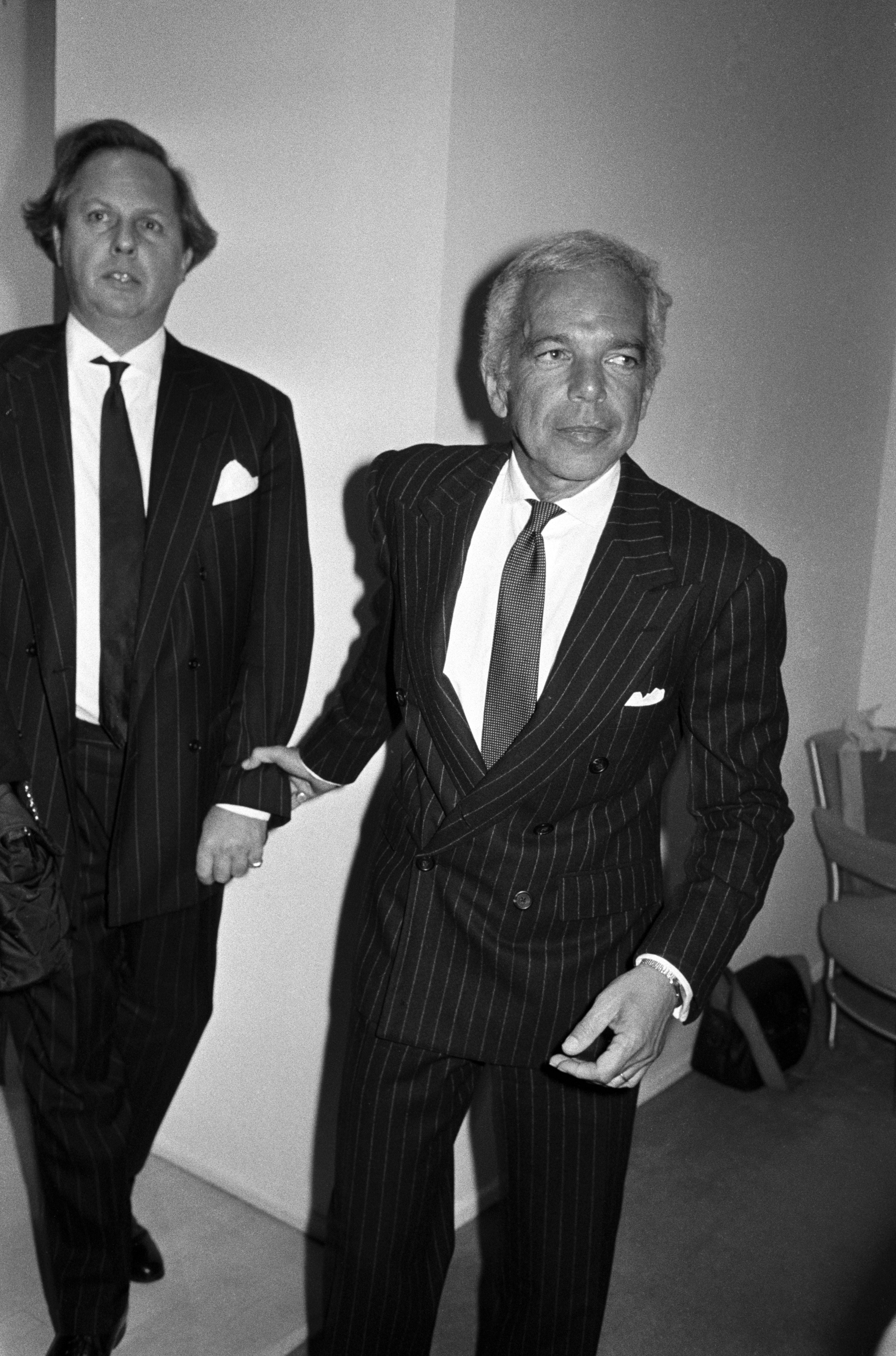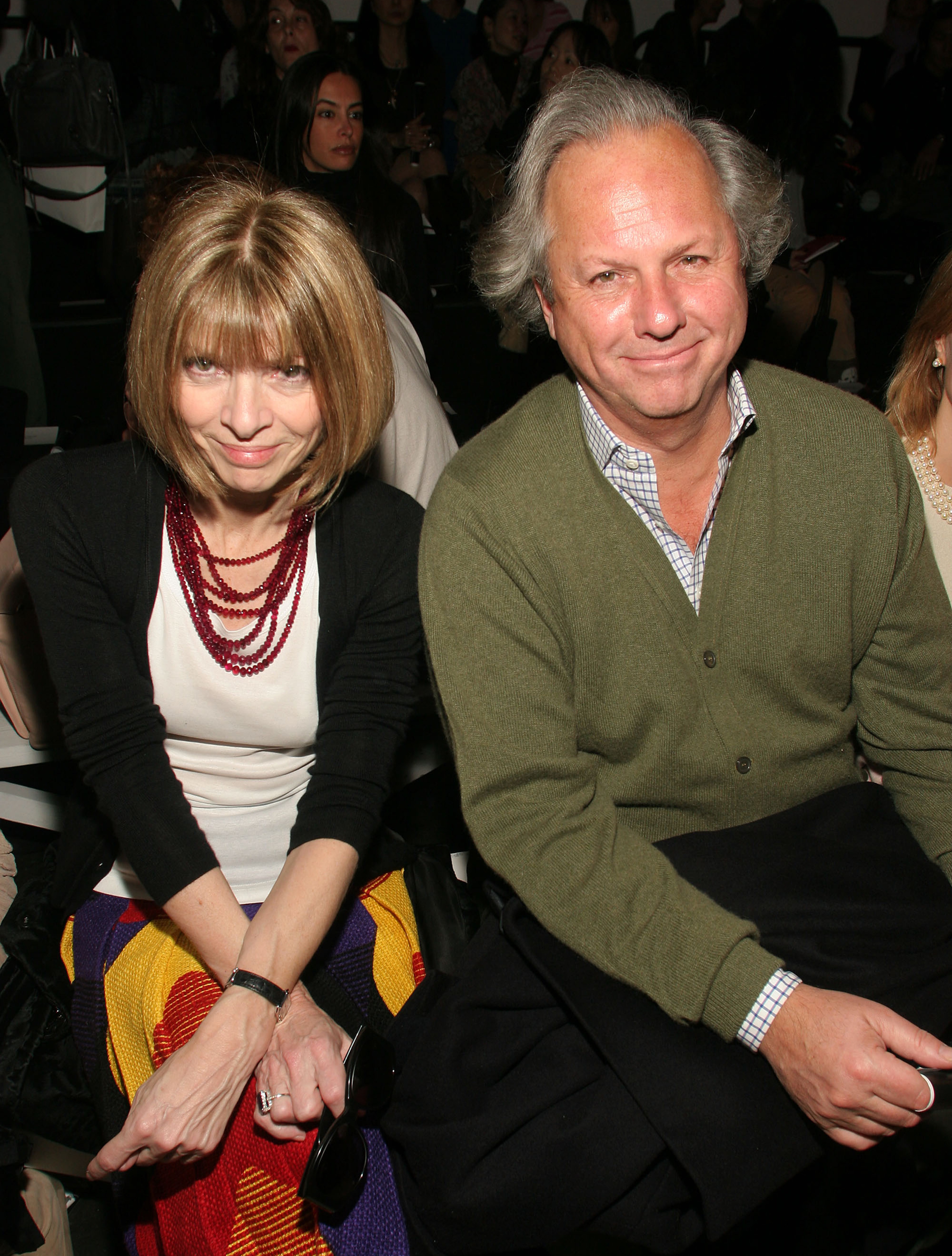
There is enough in Graydon Carter’s memoir to make a journalist today seethe. The ex-editor of Vanity Fair warns as much in the telling title of his new book: When the Going Was Good.
Gusseted by gossip and some good-mannered grousing about A-list folk including Donald Trump, Anna Wintour, and Harvey Weinstein (name-dropping is no bad thing in Carter’s book), When the Going Was Good chronicles his journey from young Canadian pup to New York institution, culminating in his 25-year tenure as editor of Vanity Fair, during which he founded the now iconic Oscars afterparty. This was the golden era of glossies, a time when cigarette smoke filled the office floor, budgets were non-existent, and expense accounts were as unfettered as the decadent parties that they paid for.
The book itself is a ride, a breakneck jaunt through Carter’s early years in Ottawa’s suburbs to life in New York, where his career would encompass illustrious titles including Time, Life, Spy, The New York Observer and finally Vanity Fair.
There is much to admire in When the Going Was Good – its opening chapter is a riveting account of when Carter’s honeymoon dovetailed with his magazine lifting the lid on Deep Throat, naming the secret Watergate source as Mark Felt. What comes across more strongly in the book than any big-time exposé, however, is the money! The sheer amount of it floating around. Ask any journalist working today about the state of the industry and the answer will be some variation on the words dead and dying.
In the second half of his book, Carter spends time describing five-star hotel stays (“the Connaught in London, the Ritz in Paris, the Hotel du Cap in the South of France, and the Beverly Hills Hotel or the Bel-Air in Los Angeles”), six-figure salaries and carte blanche with the company credit card. You can picture hundred-dollar bills cascading from the ceiling of the World Trade Center, where the Vanity Fair offices were located on the 41st floor. And where, once a week, an eyebrow lady would set up shop for the day to attend to any of the staff’s unruly, unwanted facial hair. “Maribeth’s the best in the city,” a colleague would later inform Carter. Like I said, it’s enough to make one seethe.
“Younger people would never understand the expense-account stories of the time, because that all disappeared with the Great Recession in 2008,” he writes. And it’s true: for a journalist working in 2025, these tales of paid-for dry cleaning and cars ferrying writers (who weren’t even on assignment) around town feel as imaginary as a George RR Martin fantasy saga. As for his own salary, Carter started in 1992 on an eye-watering $600,000 – double the original offer from Condé Nast boss Si Newhouse, who gave in to Carter’s request with a shrug, which seems to be how most pay negotiations were handled at the company.
Credit where credit is due, Newhouse didn’t skimp when paying his writers and creatives either. In a recent essay for The Yale Review, Bryan Burrough recalls that for 25 years, Vanity Fair contracted him on a peak salary of nearly $500,000 to write only three (three!) 10,000-word articles per year. Similarly, halfway through the book, Carter recounts contract talks with Annie Leibovitz, the publication’s principal photographer. “It came down to a $250,000 difference between what her agent demanded and what we were willing to pay,” he writes. “‘Oh, give it to her,’ Si told me finally. ‘We don’t want to nickel-and-dime them.’” (Incidentally, it was Leibovitz who took Carter’s passport photo – a fact he relays with an appropriately excitable exclamation mark.)
Carter subscribed to the belief that if you take care of the talent, you’ll get better work. By comparison, these days, you’ll find the core belief for most publications is that aforementioned nickel-and-diming.

Life in general seemed to be just peachy. During Carter’s prime, an apartment in Greenwich Village cost only $220 a month. These days, you’re looking at closer to $5,000 – for a studio. And in addition to Maribeth’s excellent eyebrow services, Condé Nast staff (down the rung, too, not only top brass) were offered interest-free loans to buy houses and apartments. Even moving costs were covered. Employees could expense their breakfasts, and not only the “working” kind. One writer based in London would expense a couple of dozen extra sausages at his regular lunch spot to take home for his family to eat during the week.
On Twitter, nightmare stories of invoices going unpaid for months if not years are depressingly common, so it’s hard not to gape at the following sentence: “Anyone on the editorial floor could take out pretty much any amount of reasonable cash just by signing a chit.”
This was the kind of journalism you see on the big screen, the sort of glamorous, creative life a young writer dreams of when entering the industry. And it goes some way to explain the perennial myth at the heart of Sex and the City: how Carrie Bradshaw could afford a brownstone on the Upper East Side and a closet full of Manolo Blahniks on the salary from her monthly column. Now, we know.
Second only to the money, what stands out in When the Going Was Good is the bickering. Good old-fashioned, below-the-belt bickering. It’s what makes chapter six so entertaining, as Carter tracks the “glorious days” at Spy, the fact-based satirical monthly he co-founded after his time working at Life.

Everything there is to know about Spy can be gleaned from the cover story of its first issue in 1986: Jerks: The Ten Most Embarrassing New Yorkers. It was caustic and hilarious. Influenced by the UK’s Private Eye, Spy trafficked in schoolyard taunts like “beaver-toothed Joe DiMaggio”; “too-rich-and-too-fleshy Bill Blass”; and “socialite war criminal Henry Kissinger”.
The spats were intense but ultimately petty. Donald Trump, then a real-estate scourge and tabloid fixture, was christened the “short-fingered vulgarian”, leading to a decades-long dispute during which he would post Carter images to prove his digits were long and lean and beautiful. (Elsewhere on Trump, Carter describes a photoshoot in which the future US president had to be cut out of his cashmere sweater with scissors because he refused to pull it off “not wanting to muss his elaborately assembled confection of hair”.)
Gore Vidal was another notable who was unhappy with his portrait in Spy. At being called litigious, the writer threatened to sue. Years later, Carter asked Vidal whether he saw the irony; he did not. As ever with trivial beefing, spouses were fair game. Kurt Vonnegut wished cancer upon Carter after Spy deemed his wife a “champion namedropper and celebrity photographer”. It wasn’t just curmudgeonly old men to suffer Carter’s, if not wrath, then certainly disdain. Of national treasure Nora Ephron’s new book Heartburn, Spy declared: “Everybody fares poorly, including the reader.”
The short-fingered vulgarian
It’s hard to imagine such public feuding going on between a journalist and their subject these days, mostly out of fear of punishment (getting blocked from the rest of the publicist’s roster) or retribution (having a fandom trolling you via social media). Such an airing of dirty laundry is welcome and refreshing – like the stink of manure wafting in on a breeze from a nearby pig sty. It’s stinky and pleasant, a reminder of the dirt from which we all come.
Already, Carter’s book has elicited a barbed riposte from fellow Vanity Fair ex-editor Toby Young (whose own memoir How to Lose Friends & Alienate People was turned into a film starring Simon Pegg and Megan Fox). Young compared the book’s “humblebrag and name-dropping” to a “Craig Brown pastiche”.

Glossy as the magazine itself, Carter’s book skates over any real issues that would have no doubt plagued a publication in the Nineties: racism, misogyny, harassment. Interestingly, in an interview with The Telegraph in 2023, the writer recalls speaking with Carter about the lack of diversity at his magazine: “It is the only time in the conversation he is not forthcoming.”
On a few serious matters, though, he does speak. Carter defends himself against accusations from Vanity Fair writer Vicky Ward, who alleged that, in preparing for her 2003 profile of Jeffrey Epstein, Carter had suppressed information about the producer’s sex abuse out of loyalty to him. To hear Carter tell it, Ward was not to be trusted and brought the allegations against Epstein to him at the last minute, leaving Vanity Fair not enough time to stand up the claims.
You never know when you’re in a golden age. You only realise it was a golden age when it’s gone
People in positions such as Carter’s, ie powerful and glamorous, typically obtain their status through inheritance and privilege. It makes sense, then, that early on in the book, he goes to some lengths to differentiate himself from that sort. He wants us to think of him as an outsider. He is Canadian, for one thing. And he once spent six months toiling on the Canadian national railroad. When he did arrive in New York, he didn’t fit in – at Life, he was notably not an Ivy Leaguer like the rest of the staff. And when he landed at Vanity Fair – passed over in an eleventh-hour act of subterfuge for the editor role at The New Yorker – he was hazed by staff who remained loyal to Tina Brown (who got the New Yorker promotion). Carter sprinkles these details in with some “gee whiskers, can’t believe this is my life” humility. “Somehow, in my case, with a lot of mishaps and a dollop of good luck along the way, things just worked out,” he writes.
Young’s assessment of When the Going Was Good as a “humblebrag”, then, is at least partially accurate, but perhaps Carter has earned the right. His enormous rates and editorial eye attracted the crème de la crème of writers: Christopher Hitchens, Michael Kinsley, Marie Brenner, Michael Lewis, Maureen Orth. The list goes on. Under his leadership, Vanity Fair broke the Michael Jackson sexual-abuse story and unmasked Deep Throat, scooping The Washington Post out of their own story. Less serious but arguably equally impressive was how Carter and his team secured the first photos of Suri Cruise, baby of Tom and Katie Holmes, back then regarded as the “Holy Grail of journalism”.

When the Going Was Good is a final dispatch from a bygone era of print magazines, a delicious last gasp of success and glamour eventually stamped out by the internet and a recession, which hammered publishers. “You never know when you’re in a golden age,” writes Carter, sounding more than a little wistful. “You only realise it was a golden age when it’s gone.”
That said, Carter appears to have had enough of a clue to duck out when he did back in 2015. It’s likely the result of the same sixth sense that underpins his golden rule for dinner parties: “The moment dessert arrives, you make a run for it.” Reading Carter’s book as a journalist today, it’s safe to say dessert hit the table long ago.
‘When the Going Was Good: An Editor’s Adventures During the Last Golden Age of Magazines’ is published by Grove Press UK, £20







